Silver service is a phrase commonly used within the hospitality and service industry. It defines the very highest level of service and standards given to clients. Typically seen in high-end restaurants, hotels, yachts and domestic homes, silver service is a traditional form of service which is considered a much-respected art form. At Polo & Tweed, we teach silver service to students from around the globe who are looking to advance their skills. We’ve created this basic guide to silver service for budding hospitality professionals to enjoy.
Traditional Table Setting
Place settings are where the tableware, such as the cutlery and glasses, are placed on the table for serving and eating. Table settings will vary dramatically across different countries and historical periods. So although we teach a standard guide, each private home, hotel and restaurant may approach the art in their own unique fashion.
Types of Place Settings
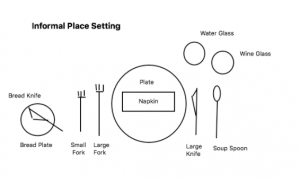
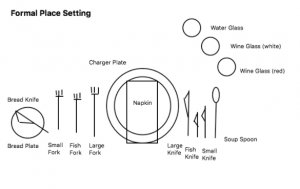
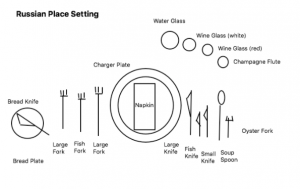
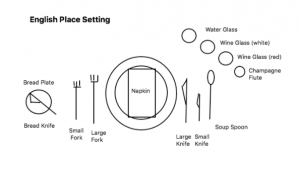
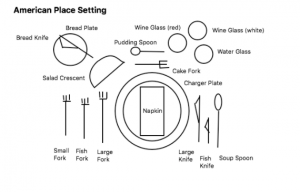
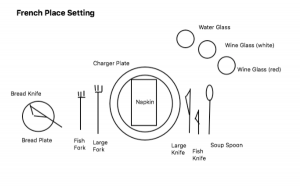
So, What Does Silver Service Involve?
Silver service is a dining service where food platters are brought to your plate. Rather than being plated up in the kitchen and then brought directly to your table. Servers using the silver service technique will use a fork and spoon, or two forks. They will hold the cutlery like chopsticks or pincers to transfer the food from the silverware to the guest’s plate. You may also have to use a cake slice for serving food such as smoked salmon. Traditionally, the food was carried on silver platters, hence the term silver service.
Some Basic Rules of Silver Service
- Never leave an empty space before a guest. Etiquette states that the space must always hold a plate. Therefore the service plates are laid at the start of the table setting. There may be an empty cover for a few moments whilst the table is cleared for pudding.
- Blend into the background. Excellent service is quiet, effortless and unobtrusive. You should not interrupt the flow of the conversation. So ensure you make little or no noise.
- The ratio of servers to guests depends on the number of courses and special preparation required. The food should be served at the correct temperature. Thus it is vital that there are the correct amount of serving staff present at the table. As a rule, provide one server for every 4-6 guests. When sauce is present it is common for 2 servers to work as a team. One to serve the course. The second to follow with the sauce.
- Do not touch the plates. Keep fingers away from the rim of the pate, and hold a fresh plate in the palm of your left hand. Servers in establishments are encouraged to wear white gloves. The server’s fingers may touch the rim of the plate when it’s cleared, but not before then.
- Remember single direction service. Food service proceeds to the right, always counterclockwise, and starts with the principal’s guest to the right or the guest of honour. Beverage service is to the left in a clockwise direction.
Order of Service
Traditionally the principal was served first, which dates back to the Middle Ages. It was believed this demonstrated the food was not poisoned. This tradition is is still observed, though now we tend to serve the most honoured guest first so that they get the service from an untouched platter. If there is no guest of honour then you start with the guest to the principal’s right, which is typically a female guest. Women are usually served first, though in more modern settings or restaurants/hotels this may be not the case, as it will result in much slower service.
Once the food has been served to the lady of honour she should commence eating immediately as this ensures that others follow suit and the food stays the correct temperature. If there are only two guests at the table, the lady of the table or the guest of the host is served first.
There is a technique of alternating service which ensures the same guest is not always served last. The first course is served to the guest of honour and proceeds counterclockwise, then the second course starts with the lady seated to the left of the host and progresses clockwise. The host must always be served last.
A Recommended Personal Hygiene Regime for Silver Service Staff
Want our tips on how to present yourself well during silver service? Read our guide! Share on X- Shower daily. Bath tubs are relaxing, but do not clean as well as a shower
- Brush your teeth at least twice a day: once in the morning after breakfast, and once before going to bed.
- Always use deodorant
- Some cultures believe that a clean shaven man is one with good personal hygiene
- Wash your hands regularly, especially before meal times and after visiting the toilet
- Wash your hair regularly
- Nails should be kept short, clean and trimmed
- Wear clean clothes
- Drying clothes in the sun helps kill bacteria
- Turn away or cover your mouth when coughing or sneezing
- Never touch your mouth, nose, ears or private areas while serving
A Guide to Silver Service Food Hygiene Techniques
- Wash hands with warm water and soap before handling food
- Raw meat carries dangerous bacteria. Make sure that you prepare raw meat on a plastic chopping board and don’t use the same board or knife for vegetables. Raw meat should be stored in closed containers in the fridge Do not wash raw chicken as this can spread the bacteria onto nearby surfaces. Meat should be correctly cooked- particularly white meat, poultry and pork as this can be extremely harmful to humans if ingested uncooked
- Wash and peel vegetables and fruit before eating. Do not use detergents or washing up liquid to clean them as this is dangerous for consumption
- Ensure all kitchen items are cleaned correctly. The average kitchen chopping board has 200% more faecal matter than found in an average person’s toilet!
- When handling food ensure your hands and nails are clean
- Tie your hair away from your face, and if possible use a cap or net to keep hair from entering food
Has our guide to silver service got you intrigued? Would you like to enrol on our next silver service training course? We’d love to hear from you and tell you more about our options!

